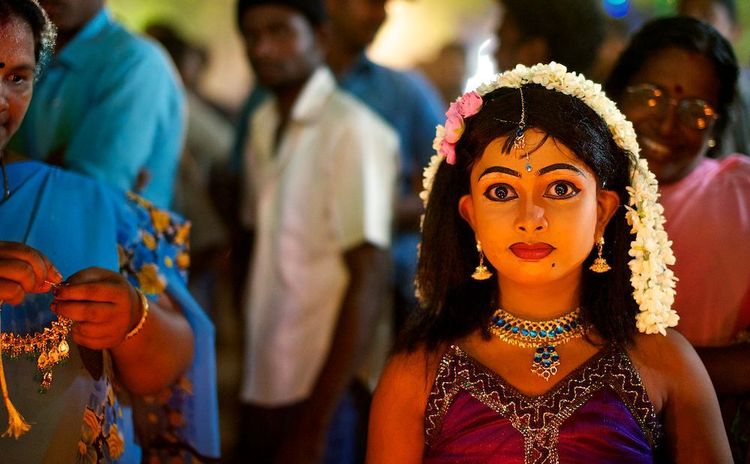For smooth Ad free experience
For smooth Ad free experience
‘Beauty is in the eyes of the beholder’ but none can argue about the beauty of the women that you’ll find graciously carrying the Chamayavilakku (five wicked lamps) for the Chamayavilakku festival held every year at Kottankulangara Devi Temple in Kollam, Kerala.

Celebrated in Kollam, Kerala
On the 10th and 11th of the Malayalam month of Meenam (second half of March) Kottankulangara Devi Temple transforms into an open space where men and boys dress up as women and carry the traditional lamb after sunset around the temple. Waiting for the deity of the temple Goddess Bhagavathy to bless them at dawn.
The sanctum sanctorum of the temple is the only one in Kerala without a roof. Thousands of devotees from all around the state attend the two-day festival. This well-known celebration attracts believers from all over the world. Thousands of males, regardless of religious affiliation, dress up as ladies and pray to the Goddess. Participation in the ceremony is open to all age groups.
Wearing exquisite sarees, jewellery, jasmine garlands, and sophisticated make-up, men go above and beyond to display themselves better. On the final two days of the 19-day celebration, the unique Chamayavilakku ritual begins in the evening and lasts till morning. Throughout the night, temple elephants carrying the Thidambu (deity idol) can be seen on the temple grounds.
Kottankulangara, like most temple festivals in Kerala, is known for its elaborate fireworks display and Kuruthola Panthal (structure made of tender coconut leaves). The deity stays in a model of the temple fashioned of Kuruthola, plantain, and areca nut during the festival days.
There are two versions of the narrative surrounding the temple's origin. According to legend, the god worshipped in the temple was first discovered by a small kid grazing cattle. They hit a stone while attempting to dehusk a coconut, causing it to bleed. The terrified children informed their parents. The grownups then sought advice from astrologers. Finally, the presence of Goddess Durga was found as the cause for the phenomenon and a temple was erected at the spot. According to another version of the story, cowherds used to dress up as girls and serve the remains of the coconut after it was grated and the milk extracted to a murti or idol in a fun manner. The goddess, dressed as an ordinary woman, came before them and blessed them, pleased by their devotion.
The festival has seen a surge in the presence of the homosexual and transgender populations from Kerala, Karnataka, and even Maharashtra in recent years. The event has also attracted the largest gathering of Kerala's transgender community, as it provides a safe venue for them to express themselves.
A day where everyone regardless of caste, creed, gender, age, sexuality can express themselves and offer their prayers without the eyes of judgement upon them.
0
You might be interested in reading more from
